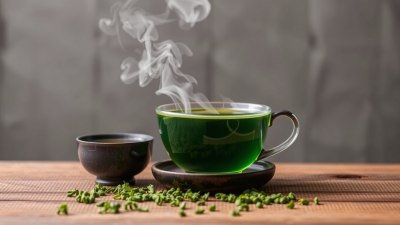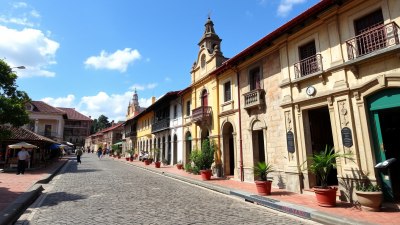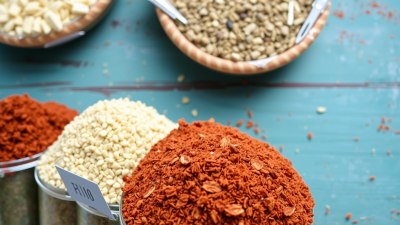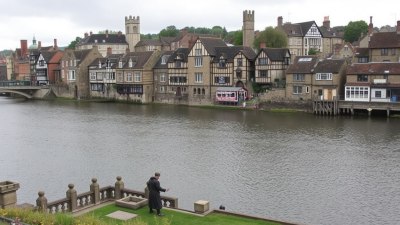Finding Unique Teas and Learning Tea Ceremonies in Asia
Explore unique teas and the art of tea ceremonies across Asia. Discover traditions, flavors, and experiences.

Image created with Flux Schnell
When it comes to beverages that are rich in culture and tradition, few can rival tea. In Asia, tea transcends mere consumption; it is an integral part of countless ceremonies and an embodiment of social customs. Throughout the continent, each region boasts its unique varieties of tea and distinct ways of preparing and enjoying it. This article explores some of the most unique teas found in Asia and the customs surrounding their ceremonies, from Japan's meticulous tea rituals to the vibrant tea culture of China.
1. The Journey of Tea in Asia
The story of tea in Asia began thousands of years ago, with its origins tracing back to ancient China. Legend has it that Emperor Shen Nong discovered tea when some leaves accidentally blew into his boiling water. This serendipitous moment sparked a cultural phenomenon that would spread across Asia and beyond, significantly impacting various societies. Today, tea is not just a drink; it is an experience that involves rituals and social connectivity, particularly in countries like China, Japan, India, and Thailand.
2. Unique Teas Across Asia
Each country in Asia has its own signature teas, which reflect local tastes and agricultural practices. Let's delve into some of these unique offerings.
2.1 China: The Land of Diverse Teas
China is perhaps the most famous tea-producing country globally, renowned for its extensive variety of teas. Green tea, black tea, oolong tea, white tea, and pu-erh tea are just a few examples of the unique offerings. One notable tea is Longjing, also known as Dragon Well tea, a green tea that originates from Hangzhou. With its flattened leaves and a sweet, slightly nutty flavor, Longjing is often considered the pinnacle of Chinese green tea.
Another fascinating variety is Tieguanyin, or Iron Goddess of Mercy, an oolong tea from Fujian province. It is known for its floral aroma and creamy, buttery texture. The tea leaves undergo an intricate fermentation process that gives Tieguanyin its distinctive flavor profile.
2.2 Japan: A Brew of Precision and Elegance
In Japan, tea is synonymous with matcha and the traditional tea ceremony, known as Chanoyu. Matcha is a finely ground powder made from shade-grown tea leaves. It offers a vibrant green color and an umami-rich taste. Due to its popularity, matcha is not only consumed as a drink but also used in a variety of culinary applications, including desserts and savory dishes.
The Japanese tea ceremony is an art form that emphasizes harmony, respect, purity, and tranquility. Every movement is intentional, from the preparation of the tea to the serving and sipping. This ritual creates a meditative space and allows participants to connect deeply with themselves and each other.
2.3 India: Chai and Beyond
In India, tea is ingrained in daily life, with chai being the beverage of choice for many. Indian chai is a spiced tea made by brewing black tea with a mixture of aromatic spices, such as cardamom, ginger, and cloves, and adding milk and sugar. Each household often has its unique chai recipe, tailored to personal tastes.
Aside from chai, India offers a variety of specialty teas, such as Darjeeling tea, known as the 'Champagne of Teas.' Grown in the Darjeeling district, this black tea is celebrated for its light, fruity flavor and delicate aroma.
2.4 Thailand: The Quest for Fragrant Brews
Thai tea is distinct and aromatic, often associated with the famous Thai iced tea served in street stalls. Made from strong black tea, it is sweetened with condensed milk and topped with whipped cream, resulting in a creamy, flavorful beverage. In addition to the famous iced version, the Thai communities in the northern region also enjoy a herbal tea known as 'cha-yen,' infused with a fragrant blend of herbs and spices.
3. Tea Ceremonies: A Cultural Experience
Beyond unique flavors, the art and practice of tea ceremonies in Asia are equally enchanting. Each culture has its own customs and rituals that elevate the experience of drinking tea to something profound.
3.1 Chinese Tea Ceremony
The Chinese tea ceremony, or gongfu cha, emphasizes the art of brewing tea and is characterized by a methodical approach that maximizes flavors. The lighting of incense, the use of fine teapots, and the careful selection of high-quality tea leaves contribute to this experience. The focus is not only on savoring the tea but also on appreciating the aesthetic and spiritual components of the process. Small cups are used for tasting, and the ceremony invites mindfulness and conversation while allowing participants to bask in the depth of the experience.
3.2 Japanese Tea Ceremony (Chanoyu)
The Japanese tea ceremony is steeped in tradition and philosophy. It is an aesthetic and spiritual experience characterized by four principles: harmony, respect, purity, and tranquility. Every element is curated, from the utensils to the surroundings. Participants enter a tea room, typically a tranquil garden space, and engage in a sequence of carefully choreographed movements culminating in the preparation and appreciation of matcha. This experience encourages participants to let go of everyday stresses and appreciate the beauty of the moment.
3.3 Indian Tea Rituals
In India, tea is often enjoyed in a social context, especially in rural areas where it serves as a welcome gesture for guests. The process of making chai is communal, involving family and friends as they gather to brew, taste, and share stories. While there isn't a formal ritual like in Japan or China, the act of offering tea embodies warmth and hospitality, reflecting the cultural importance of community.
3.4 Thai Tea Culture
In Thailand, tea ceremonies are less formal, yet they are rich in flavor and diversity. While visiting teahouses, one can experience 'chai yen' accompanied by sweet snacks or enjoy refreshing herbal teas made from locally sourced ingredients. The emphasis is on gratification and sharing moments with friends and family in vibrant settings, whether on bustling streets or serene beaches.
4. Discovering Tea Heritage Tours
For those seeking to delve deeper into Asian tea culture, many regions offer tea heritage tours, where visitors can experience firsthand the process of tea production and partake in local rituals. These tours often include visits to tea plantations, workshops on tea brewing techniques, and opportunities to participate in tea ceremonies.
4.1 China Tea Tours
China’s tea heritage tours can take visitors to famous regions like Hangzhou and Fujian. These tours often include visits to tea gardens, where travelers can pluck their leaves, learn about processing methods, and experience traditional tea ceremonies led by local masters. Engaging in these educational tours allows travelers to gain profound knowledge of various teas and appreciate their cultural significance.
4.2 Japanese Tea Experiences
In Japan, opportunities abound to join tea ceremony experiences in cities like Kyoto and Tokyo. Visitors can partake in workshops where they learn about the history of matcha and the art of preparing it. Furthermore, some temples offer immersive experiences in tea practices while encouraging mindfulness and serenity amidst nature.
4.3 Indian Spices and Tea Tours
India invites visitors to partake in chai-making workshops, where chefs and tea experts share insights into the nuances of spices and brewing techniques. Travelers can also explore tea estates in Darjeeling or Assam to understand how different climates impact flavors.
4.4 Thai Tea Adventures
Thailand offers unique tea experiences in both urban settings and lush countryside. Tourists can participate in local tea tastings, where they can enjoy different varieties alongside sweet and savory local specialties while mingling with locals.
5. An Ongoing Journey
Finding unique teas and learning tea ceremonies in Asia offers an ongoing journey filled with discoveries and unforgettable experiences. Each cup of tea serves as a vessel, carrying with it the stories, traditions, and artistry of its origin. Whether engaging in a tranquil Japanese tea ceremony or savoring a vibrant cup of Chinese oolong, travelers can find connectiveness through tea, weaving rich narratives of culture, hospitality, and comfort. This exploration is a reminder that tea is not just a beverage; it is a bridge connecting us to nature and each other as we sip our way through the vibrant tapestry of Asian cultures. Embarking on this adventure means immersing oneself in the flavors and rituals that define the essence of Asia's tea heritage.











